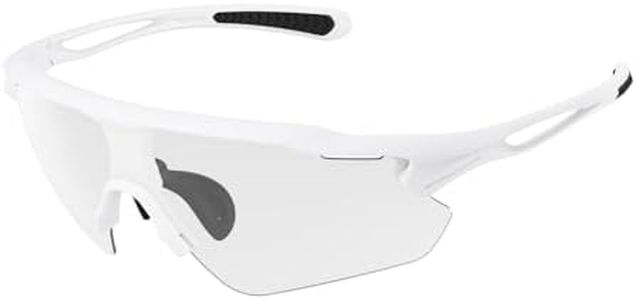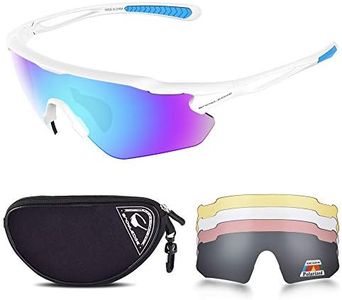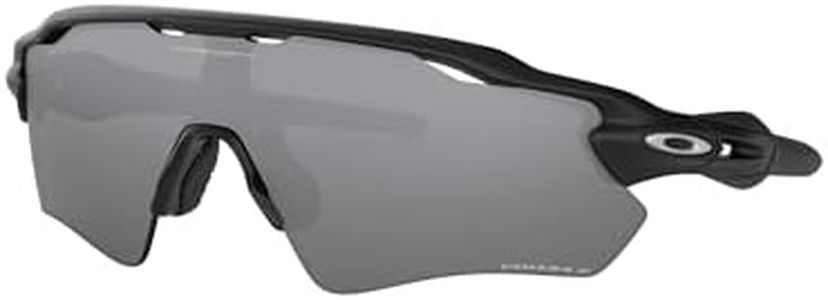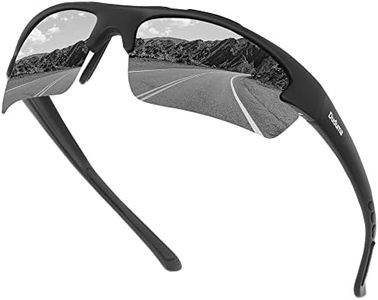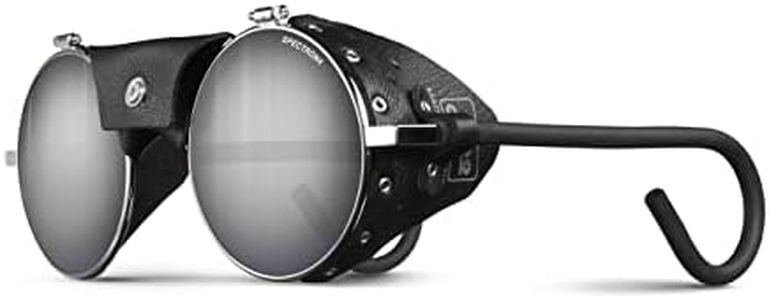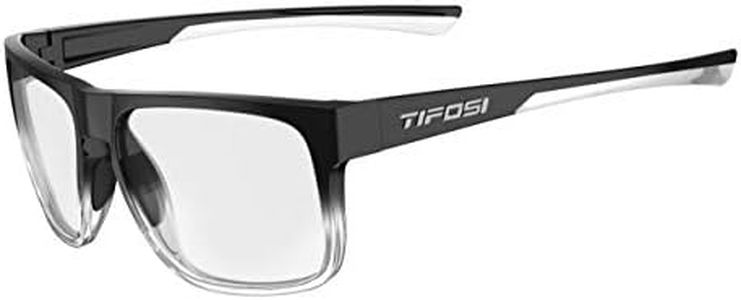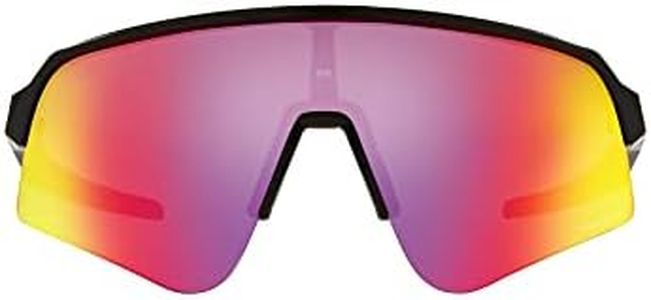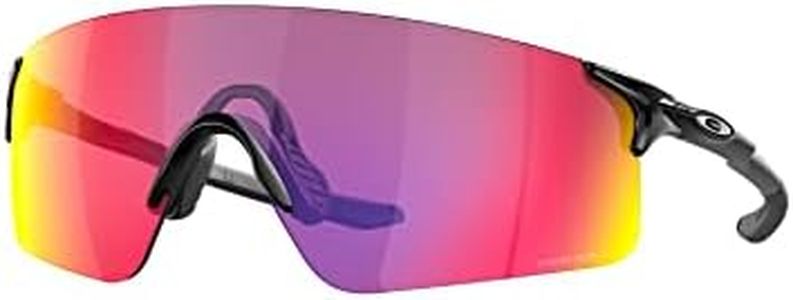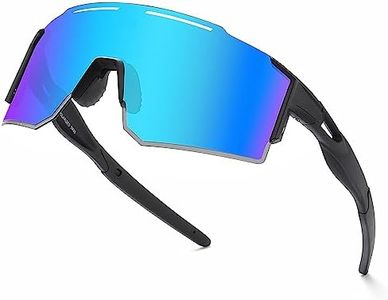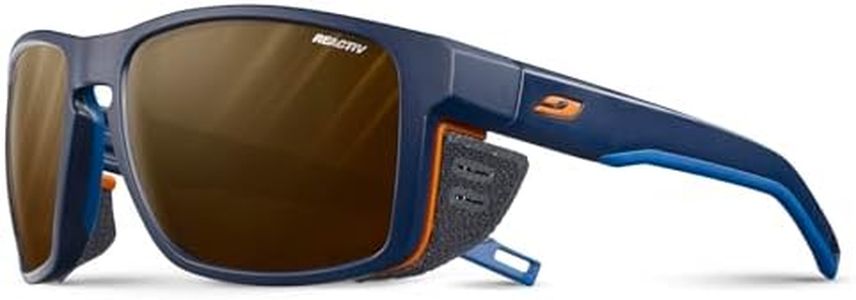We Use CookiesWe use cookies to enhance the security, performance,
functionality and for analytical and promotional activities. By continuing to browse this site you
are agreeing to our privacy policy
10 Best Cycling Glasses
From leading brands and best sellers available on the web.By clicking on a link to a third party's website, log data is shared with that third party.
Buying Guide for the Best Cycling Glasses
Cycling glasses are essential for protecting your eyes from wind, dust, insects, and harmful UV rays while riding. They also help enhance visibility by reducing glare and improving contrast, especially in changing light conditions. Picking the right cycling glasses involves understanding the different features and how they relate to your unique riding habits, environments, and comfort preferences.Lens Tint and TypeThe lens tint refers to the color and darkness of the lenses, which affects how much light is let through and how colors appear. Clear or yellow lenses are good for low-light or cloudy days, while darker tints like grey or brown work for bright, sunny conditions. Some lenses change tint based on light (photochromic), automatically adapting to brightness. Picking the right lens tint depends on where and when you ride most: choose lighter tints for early morning or evening, darker ones for sunny midday rides, and photochromic if you often ride in changing light.
UV ProtectionUV protection describes how well the lenses block harmful ultraviolet rays from the sun, which can damage your eyes over time. Most cycling glasses offer UV400 protection, meaning they block 100% of UVA and UVB rays. Always check for full UV protection to safeguard your eyes, regardless of lens darkness. This is especially important if you ride often during the day or at higher altitudes where UV exposure is stronger.
Lens Shape and CoverageLens shape and coverage determine how much of your eye area is shielded from wind, debris, and sunlight. Larger, wraparound lenses provide better protection and a wider field of vision, making them ideal for road cycling or fast rides. Smaller lenses may feel lighter but offer less coverage. Think about your route conditions and speed; if you often encounter bugs, dust, and wind, go for fuller coverage.
Ventilation and Anti-Fog FeaturesVentilation and anti-fog features prevent your glasses from steaming up, especially during slow climbs or humid weather. Some glasses have small vents or special coatings to keep the lenses clear. If you sweat a lot or ride in conditions where fogging is a problem, look for glasses that specifically address this issue with ventilated frames or anti-fog lenses.
Fit and ComfortFit and comfort depend on frame shape, weight, and how the glasses sit on your face. Adjustable nose pads, temple arms, and lightweight materials help ensure the glasses stay put, even on bumpy rides or when you're sweating. Choosing a pair that fits well is important for long rides to avoid discomfort or pressure points. Try different shapes to see what feels best for your head size and helmet compatibility.
Impact ResistanceImpact resistance refers to the ability of the lenses and frames to withstand hits from stones or falls without breaking or shattering. Polycarbonate lenses are commonly used for their toughness. For off-road riders or those riding in areas with lots of debris, more robust, impact-resistant glasses offer better protection.
Interchangeable LensesSome cycling glasses allow you to swap out lenses to match different lighting conditions. A set might include clear, yellow, and dark lenses. This is useful if you ride in varied environments, so you can always have the best possible vision. If you stick to similar routes and times of day, a single lens may be enough, but if you like versatility, interchangeable lenses give you more flexibility.
